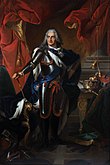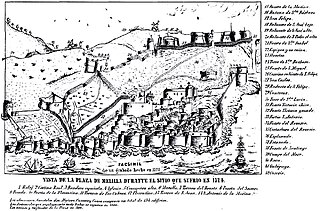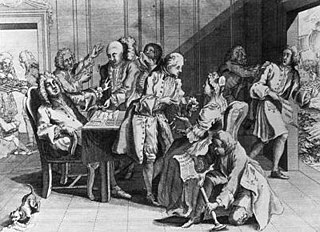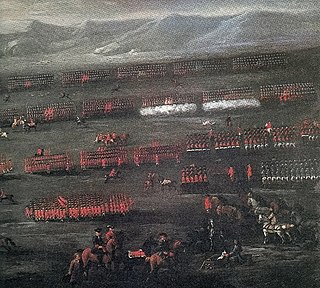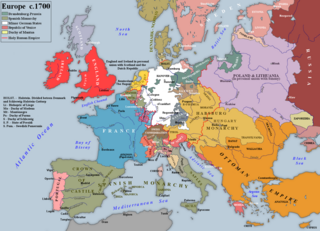Births
1730
- January 3 – Velu Nachiyar, queen regnant of Sivaganga (d. 1796)
- March 7 – Louis Auguste Le Tonnelier de Breteuil, last prime minister of the French monarchy (d. 1807)
- April 1 – Salomon Gessner, Swiss painter and newspaper publisher (d. 1788)
- April 16 – Henry Clinton, British general (d. 1795)
- April 26 – John Moore, Archbishop of Canterbury (d. 1805)
- May 13 – Charles Watson-Wentworth, 2nd Marquess of Rockingham, Prime Minister of Great Britain (d. 1782) [107]
- May 28 – Maria Angela Ardinghelli, Italian scientific translator (d. 1825)
- June 21 – Motoori Norinaga, Japanese philologist, scholar of the kokugaku school (d. 1801)
- July 10 – Jean-Baptiste Willermoz, French Freemason (d. 1824)
- July 12
- Anna Barbara Reinhart, Swiss mathematician (d. 1796)
- Josiah Wedgwood, English pottery manufacturer and abolitionist (d. 1795)
- July 26 – Charles Messier, French astronomer (d. 1817)
- August 1 – Frederick Hervey, 4th Earl of Bristol, English Anglican prelate (d. 1803)
- August 27 – Johann Georg Hamann, German philosopher (d. 1788)
- September 7 – Elisabetta de Gambarini, English composer (d. 1765)
- September 17 – Friedrich Wilhelm von Steuben, Prussian army officer (d. 1794)
- November 23 – William Moultrie, American general (d. 1805)
- December 14 – James Bruce, Scottish explorer (d. 1794)
- December 25 – Philip Mazzei, Italian physician, friend of Thomas Jefferson (d. 1816)
- December 30 – William Hamilton, British diplomat, antiquary (d. 1803)

Henry Clinton - date unknown
- Jacob Alyashar, Talmudist and emissary (d. c. 1790) [108]
- John Cook, American farmer, President of Delaware (d. 1789)
- Anne Rossignol, African slave trader (d. 1810)
- John Murray, 4th Earl of Dunmore, Scottish peer and colonial governor in the Americas (d. 1809)
- White Eyes, Indigenous American (Lenape) leader (d. 1778)
1731
- January 3 – Angelo Emo, Venetian admiral and statesman (d. 1792)
- February – Charles Churchill, English poet (d. 1764)
- March 19 – Gabriela Silang, Filipino rebel leader and heroine (d. 1763)
- April 8 – William Williams, signer of the United States Declaration of Independence (d. 1811)
- May 8 – Beilby Porteus, Bishop of London and abolitionist (d. 1809)
- June 2 – Dorothea Biehl, Danish writer (d. 1788)
- July 16 – Samuel Huntington, Patriot in the American Revolution and politician (d. 1796)
- August – Henry Constantine Jennings, English gambler and collector (d. 1819)

- October 10 – Henry Cavendish, English scientist (d. 1810)
- November 9 – Benjamin Banneker, African-American astronomer, surveyor of the District of Columbia (d. 1806)
- November 15 – William Cowper, English poet (d. 1800)
- December 8 – František Xaver Dušek, Czech composer (d. 1799)
- December 12 – Erasmus Darwin, English scientist and grandfather of Charles Darwin (d. 1802)
- December 28 – José de Viera y Clavijo, Spanish writer
- Nikephoros Theotokis, Greek scholar and theologian (d. 1800)
1732
- January – Abbas III, Shah of Persia (d. 1740)
- January 17 – Stanisław August Poniatowski, last King of Poland and Grand Duke of Lithuania (d. 1798)
- January 20 – Richard Henry Lee, 12th President of the Continental Congress (d. 1794)
- January 24 – Pierre de Beaumarchais, French writer (d. 1799) [109]
- February – Charles Churchill, English poet (d. 1764)
- February 6 – Charles Lee, general of the Continental Army (d. 1782)
- February 22
- George Washington, first President of the United States (d. 1799)
- Jean-Bernard Restout, French painter (d. 1797)
- March 1 – William Cushing, Associate Justice of the Supreme Court of the United States (d. 1810)
- March 31 – Joseph Haydn, Austrian composer (d. 1809)
- April 5 – Jean-Honoré Fragonard, French painter (d. 1806)
- April 8 – David Rittenhouse, American astronomer, inventor, mathematician, surveyor, scientific instrument craftsman and public official (d. 1796)
- April 13 – Frederick North, Lord North, Prime Minister of Great Britain (d. 1792) [110]
- April 17 – John Blair Jr., American politician and Associate Justice of the Supreme Court of the United States (d. 1800)
- June 21 – Johann Christoph Friedrich Bach, German composer (d. 1795)
- September 2 – William Crawford, American soldier and surveyor (d. 1782)
- September 26 – José de Córdoba y Ramos, Spanish explorer, naval commander (d. 1815)
- September 30 – Jacques Necker, French politician (d. 1804)
- October 6 – Nevil Maskelyne, English Astronomer Royal (d. 1811)
- October 10 – John Hancock, American silversmith (d. 1784)
- October 24 – Cristina Roccati, Italian scholar in physics (d. 1797)
- November 4 – Thomas Johnson, American politician and Associate Justice of the Supreme Court of the United States (d. 1819)
- November 9 – Jeanne Julie Éléonore de Lespinasse, French salon holder (d. 1776)
- November 13 – John Dickinson, Governor of Delaware and Pennsylvania (d. 1808)
- December 6 – Warren Hastings, British administrator (d. 1818)
- December 15 – Carl Gotthard Langhans, German architect (d. 1808)
- December 21 – Johann Christian Wiegleb, German chemist (d. 1800)
- December 23 – Richard Arkwright, English inventor (d. 1792)
- date unknown– Francis Marion, American officer (d. 1795)
1733
- January 22 – Philip Carteret, British Naval Officer (d. 1796)
- January 24 – Benjamin Lincoln, major general in the Continental Army during the American Revolutionary War, and politician (d. 1810)

- March 13 – Joseph Priestley, English scientist and minister (d. 1804)
- May 4 – Jean-Charles de Borda, French mathematician, physicist, political scientist, and sailor (d. 1799)
- July 27 – Jeremiah Dixon, English surveyor and astronomer (d. 1779)
- September 5 – Christoph Martin Wieland, German poet and writer (d. 1813)
- September 18 – George Read, American lawyer and signer of the Declaration of Independence (d. 1798)
- October 14 – François Sébastien Charles Joseph de Croix, Count of Clerfayt, Austrian field marshal (d. 1798)
- October 15 – Lisa Eriksdotter, Finnish visionary
- November 16 – Siraj ud-Daulah, the last independent ruler of Bengal of undivided India (d. 1757)
- November 20 – Philip Schuyler, general in the American Revolution, United States Senator from New York, father of Angelica Schuyler Church and Elizabeth Schuyler Hamilton (d. 1804)
- undated– Johanna Löfblad, Swedish actor and singer (d. 1811)
1734
- January 16 – John A. Treutlen, Governor of Georgia (d. 1782)
- January 20 – Robert Morris, Founding Father of the United States (d. 1806)
- February 15 – William Stacy, American Revolutionary War officer (d. 1802)
- February 27 – Thomas Conway, American Revolutionary War general (d. 1800)
- March 1 – Jeanne de Bellem, heroine of the Brabant Revolution
- March 19 – Thomas McKean, American lawyer, signer of the Declaration of Independence (d. 1817)
- April 17 – Taksin, King of Thailand (d. 1782)
- April – Elsa Beata Bunge, Swedish botanist (d. 1819)
- May 23 – Franz Mesmer, Austrian physician (d. 1815)
- July 25 – Ueda Akinari, Japanese author and scholar (d. 1809)
- August 10 – Naungdawgyi, Burmese king (d. 1763)
- August 24 – Benjamin Church, first Surgeon General of the United States Army (d. 1763)
- September 3 – Joseph Wright, British painter (d. 1797)
- September 17 – Elizabeth Canning, English maidservant and kidnappee (d. 1773)
- October 7 – Sir Ralph Abercromby, British general (d. 1801)

- November 2 – Daniel Boone, American frontiersman (d. 1820)
- December 1 – Adam Kazimierz Czartoryski, Polish aristocrat and patron of the arts (d. 1823)
- December 17 – Queen Maria I of Portugal (d. 1816)
- December 21 – Paul Revere, American silversmith, engraver, and Patriot in the American Revolution (d. 1818)
- December 26 – George Romney, English painter (d. 1802)
- December 31 – Francisco Manoel de Nascimento, Portuguese poet (d. 1819)
- date unknown
- Catharina Ahlgren, Swedish poet, editor and early feminist (d.1800)
- Ulrica Arfvidsson, Swedish fortune teller (d. 1801)
- Elżbieta Branicka, Polish szlachta and politician (d. 1800)
- John Dawson, English mathematician and surgeon (d.1820)
- Pedro Fages, Spanish soldier, explorer, and Governor of Alta California (d. 1794)
- Rohal Faqir, Pakistani saint-poet and mystic (d.1804)
1735
- January 1 – Paul Revere, American silversmith and patriot (d. 1818)
- January 8 – John Carroll first Roman Catholic Archbishop in the U.S. (d. 1815)
- January 9 – John Jervis, 1st Earl of St Vincent, British Royal Navy admiral (d. 1823)
- January 27 – Étienne Clavière, French financier and politician (d. 1793)
- February 13 – Crown Prince Sado of Joseon (d. 1762)
- February 28 – Alexandre-Théophile Vandermonde French musician and chemist (d. 1796)
- March 1 – Caroline Thielo, Danish actress (d. 1754)
- March 29 – Johann Karl August Musäus German author (d. 1787)
- April 13 – Isaac Low, New York delegate to the Continental Congress (d. 1791)
- May 1 – Lorenzo Hervás y Panduro Spanish Jesuit philologist (d. 1809)
- May 23 – Charles Joseph, Prince de Ligne, (d. 1814)
- June 16 – Nicolas Bernard Lépicié, French painter (d. 1784)
- June 26 – Joseph Ducreux, French noble, portrait painter, pastelist, miniaturist and engraver (d. 1802)
- July 4 – Jacoba van den Brande, Dutch culture personality (d. 1794)
- July 10 – Ulrika Pasch, Swedish painter (d. 1796)
- September 5 – Johann Christian Bach, German composer (d. 1782)
- September 6 – John Joseph Merlin, born Jean-Joseph Merlin, Liège-born clock- and musical-instrument-maker and inventor (d. 1803)
- September 20 – James Keir, Scottish geologist, chemist and industrialist (d. 1820)
- September 28 – Augustus FitzRoy, 3rd Duke of Grafton, Prime Minister of the United Kingdom (d. 1811)
- October 9 – Karl Wilhelm Ferdinand, Duke of Brunswick (d. 1806)
- October 21 – Richard Gough, English antiquary (d. 1809)

- October 30 – John Adams, second President of the United States (d. 1826)
- November 10 – Granville Sharp, English abolitionist (d. 1813)
- December 29 – Thomas Banks, English sculptor and artist (d. 1805)
- December 31 – Jean de Crévecoeur, French-American writer (d. 1813)
- date unknown
- John Julius Angerstein, Russian-born English merchant, insurer and art collector (d. 1823)
- William Bell, English portrait painter from Newcastle upon Tyne (d. c. 1806)
- Bety of Betsimisaraka, queen regnant (d. 1805)
- Mary Evans, Welsh religious leader (d. 1789)
- Edward Telfair, Scottish-born American politician and Governor of Georgia (d. 1807)
- Regina-Louise von Freedricksz, Russian industrialist (d. 1821)
1736

- January 7 – Andrew Adams, American judge (d. 1797)
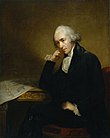
- January 19 – James Watt, Scottish inventor (d. 1819) [111]
- January 25 – Joseph-Louis Lagrange, Italian-born mathematician (d. 1813)
- February 3 – Johann Georg Albrechtsberger, Austrian musician (d. 1809)
- February 29 – Ann Lee, English-born American religious leader (d. 1784)
- March 20 – Rama I, First King of Siam (d. 1809)
- May 8 – Caterina Dolfin, Italian (Venetian) poet (d. 1793)
- May 10 – George Steevens, English literary critic (d. 1800)
- May 29 – Patrick Henry, American patriot (d. 1799)
- June 3 – Sir John Acton, 6th Baronet, Prime Minister of Naples (d. 1811)
- June 7 – Fermín Lasuén, Spanish missionary (d. 1803)

- June 14 – Charles-Augustin de Coulomb, French physicist (d. 1806)
- June 21 – Enoch Poor, American general (d. 1780)
- June 25 – John Horne Tooke, English politician, philologist (d. 1812)
- July – Juan Bautista de Anza, Governor of the Spanish Province of New Mexico (d. 1788)
- August 9 – Louis Joseph, Prince of Condé (d. 1818)
- August 15 – Alexander Runciman, Scottish painter (d. 1785)
- August 26 – Jean-Baptiste L. Romé de l'Isle, French geologist (d. 1790)
- September 15 – Jean Sylvain Bailly, French astronomer (d. 1793)
- September 16 – Carter Braxton, signer of the American Declaration of Independence (d. 1797)
- October 27 – James Macpherson, Scottish poet (d. 1796)
- date unknown
- Robert Jephson, Irish dramatist (d. 1803)
- Li Ching-Yuen, Chinese herbalist, martial artist and tactical advisor (d.1933) (claimed)
- Pierre le Pelley I, Seigneur of Sark (d. 1778)
- Claudius Smith, American revolutionary (d. 1779)
- Sir James Tylney-Long, 7th Baronet, English politician (d. 1794)
1737
- January 4 – Louis-Bernard Guyton de Morveau, French chemist, politician (d. 1816)
- January 23 – John Hancock, American politician and revolutionary (d. 1793)

- January 29 – Thomas Paine, British-born American patriot and pamphleteer (d. 1809)
- March 14 – Ioan Nicolidi of Pindus, Aromanian physician and noble (d. 1828) [112]
- March 23 – Arthur St. Clair, American soldier and politician (d. 1818)
- April 27 – Edward Gibbon, English historian and politician (d. 1794)
- May 2 – William Petty, 2nd Earl of Shelburne, Prime Minister of Great Britain (d. 1805) [113]
- June 20 – Tokugawa Ieharu, Japanese shōgun (d. 1786)
- August 5 – Johann Friedrich Struensee, Danish royal physician (d. 1772)
- August 14 – Charles Hutton, English mathematician (d. 1823)
- August 29 – John Hunter, second governor of New South Wales (d. 1821)
- September 9 – Luigi Galvani, Italian physician and physicist (d. 1798)
- September 14 – Michael Haydn, Austrian composer (d. 1806)
- September 15 – Miklós Küzmics, Hungarian Slovenes writer, Catholic priest (d. 1804)
- September 19 – Charles Carroll of Carrollton, only Roman Catholic signer of the American Declaration of Independence (d. 1832)
- December 26 – Prince Josias of Coburg, Austrian general (d. 1815)
- date unknown–
- Frances Abington, English actress (d. 1815)
- Gelelemend, Indigenous American (Lenape) leader (d. 1811)
1738
- January 21 – Ethan Allen, American patriot (d. 1789)
- February 6 – Pierre-Joseph Desault, French anatomist and surgeon (d. 1795)
- April 12 – Padre Francisco Garcés, Spanish missionary (d. 1781)
- April 14 – William Cavendish-Bentinck, 3rd Duke of Portland, Prime Minister of the United Kingdom (d. 1809) [114]
- May 27 – Nathaniel Gorham, American politician (d. 1796)
- May 28 – Joseph-Ignace Guillotin, French physician (d. 1814)
- June 4 – King George III of the United Kingdom (d. 1820)
- July 3 – John Singleton Copley, American painter (d. 1815)
- July 20 – Darejan Dadiani, Georgian queen consort (d. 1807)
- July 22 – Anne d'Yves, writer, participant in the Brabant Revolution (d. 1814)
- August 28 – Etteilla, French occult cartomancer (d. 1791)
- September 25 – Nicholas Van Dyke, American lawyer and President of Delaware (d. 1789)
- October 11 – Arthur Phillip, British admiral and Governor of New South Wales (d. 1814)
- October 18 – Andrei Bolotov, Russian agriculturalist and memoirist (d. 1833)
- October 29 – Charles Spalding, Scottish inventor and underwater diver (d. 1783)

- November 15 – William Herschel, German-born astronomer (d. 1822)
- December 31 – Charles Cornwallis, 1st Marquess Cornwallis, British general (d. 1805)
1739
- January 25 – Charles François Dumouriez, French general (d. 1823)
- February 15 – Alexandre-Théodore Brongniart, French architect (d. 1813)
- March 16 – George Clymer, American politician and Founding Father (d. 1813)
- March 19 – Charles-François Lebrun, duc de Plaisance, Third Consul of France (d. 1824)
- August 31 – Johann Augustus Eberhard, German theologian, philosopher (d. 1809)
- September 12 – Mary Bosanquet Fletcher, Methodist preacher and philanthropist (d. 1816)
- October 11 – Grigory Potemkin, Russian military leader, statesman, nobleman and favourite of Catherine the Great (d. 1791)
- November 2 – Carl Ditters von Dittersdorf, Austrian composer (d. 1799)
- November 8 – Henrik Gabriel Porthan, Finnish professor and historian (d. 1804) [115]
- November 20 – Jean-François de La Harpe, French critic (d. 1803)
- December 14 – Pierre Samuel du Pont de Nemours, French politician (d. 1817)
- date unknown
- Antonio Cachia, Maltese architect, engineer and archaeologist (d. 1813)
- Bénédict Chastanier, French surgeon (d. 1816)
- Margherita Dalmet, Venetian dogaressa (d. 1817)
- Paul François Ignace de Barlatier de Mas, French naval captain (d. 1807)
- Samuel Mason, Revolutionary War soldier, early American outlaw (d. 1803)
- Karoline Kaulla, German banker (d. 1809)
- Yelizaveta Belogradskaya, Russian singer and musician






